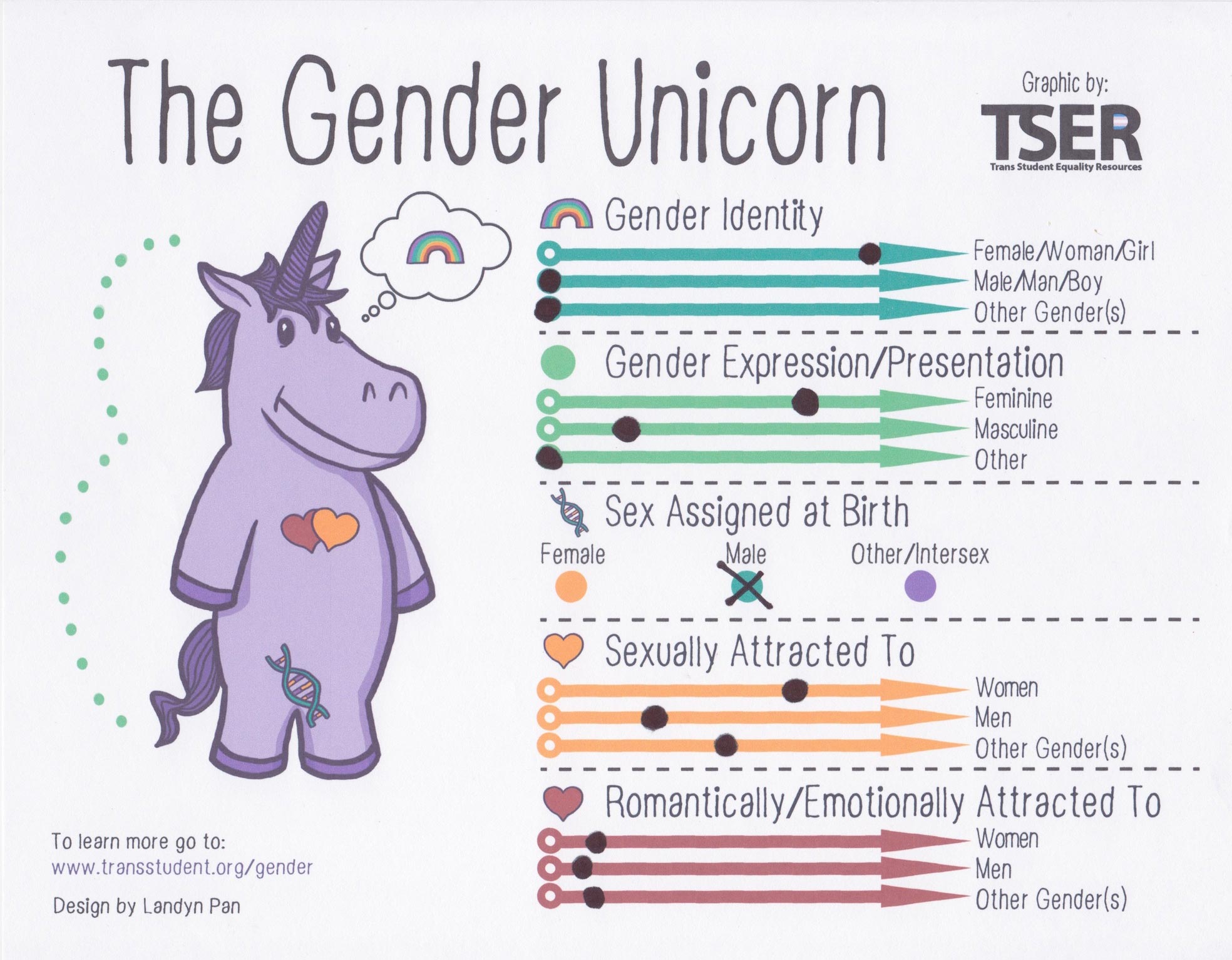Aspects of Gender Identity
Here are some key terms related to the LGBTQ community. Remember, these terms can be defined in various ways, and the most important thing is how you identify—not how someone labels you. These are just some of the ways people identify. There are many ways to identify.
Sex Assigned at Birth
Usually assigned at birth by a doctor. Combination of chromosomes, hormones, internal and external reproductive organs.
- Male
A label given to someone at birth by a medical professional, based on the presence of a penis, testicles, and/or scrotum and/or X and Y chromosomes. - Female
A label given to someone at birth by a medical professional, generally based on the presence of a vulva, vagina, uterus and/or ovaries and/or X chromosomes. - Intersex
A general term used for a variety of conditions in which a person is born with a reproductive or sexual anatomy, chromosomal makeup, or hormonal pattern that cannot be readily assigned a label of female or male.
Gender Identity
Your innermost concept of self as “male” or “female”—or somewhere in between. What we perceive and call ourselves.
- Transgender or Trans
An umbrella term for people whose gender identity differs from the sex they were assigned at birth. Transgender people may or may not alter their bodies hormonally or surgically, but it’s important to know that being transgender is not dependent upon medical procedures. - Cisgender or Cis
Gender identity that is consistent with the sex they were assigned at birth. - Gender Nonconforming or GNC
Also known as Gender Expansive, Gender Variant, or Gender Creative, is a term that refers to individuals whose gender expression does not follow social expectations or stereotypes based on their sex assigned at birth.
Gender Expression
The way in which a person acts to communicate their gender identity (for example, one’s name, preferred gender pronoun, behavior, clothing, communication style and interests).
- Masculine
Expressing one’s gender through appearance, name, and/or mannerisms that are consistent with common understandings of masculinity, regardless of gender identity or sexual orientation. - Feminine
Expressing one’s gender through appearance, name, and/or mannerisms that are consistent with common understandings of femininity, regardless of gender identity or sexual orientation - Androgynous
Expressing one’s gender through appearance, name, and/or mannerisms that are not associated with masculinity or femininity, regardless of gender identity or sexual orientation
Sexual Orientation
Refers to the sex of those to whom one is physically, emotionally or romantically attracted.
- Heterosexual
People who are attracted to people of the opposite sex. (aka. straight) - Bisexual
People who are attracted to people of the same or another gender. - Gay
People who are attracted to people of the same gender - Lesbian
A woman who is attracted to other women. Sometimes preferred over “gay.” - Asexual
An identity term to describe a person who may not experience romantic and/or sexual attraction. - Questioning
Someone trying to figure out their sexual orientation and/or gender identity.
There are many ways to identify.
Gender identity, gender expression, as well as physical and emotional attraction exist as a spectrum for each person. You can use the Gender Unicorn to help illustrate your own gender identity. Here is an example of how someone has filled out their Gender Unicorn. Learn more about it at TSER.

